Helping nature heal its burns.
- Delphin Ruché

- Jun 16
- 4 min read
Updated: Aug 19
As Northern Lights tourism has exploded in Tromsø, so has the number of campfires at popular viewing spots. These dumped campfires leave lasting marks on the landscape, damage fragile habitats, and deepen the already growing frustration local communities feel toward the tourism industry.
To address this, Norwegian Institute for Nature Research (NINA) and Rissa Citizen Science are teaming up to promote traceless outdoor practices, inspired by the Leave No Trace movement.
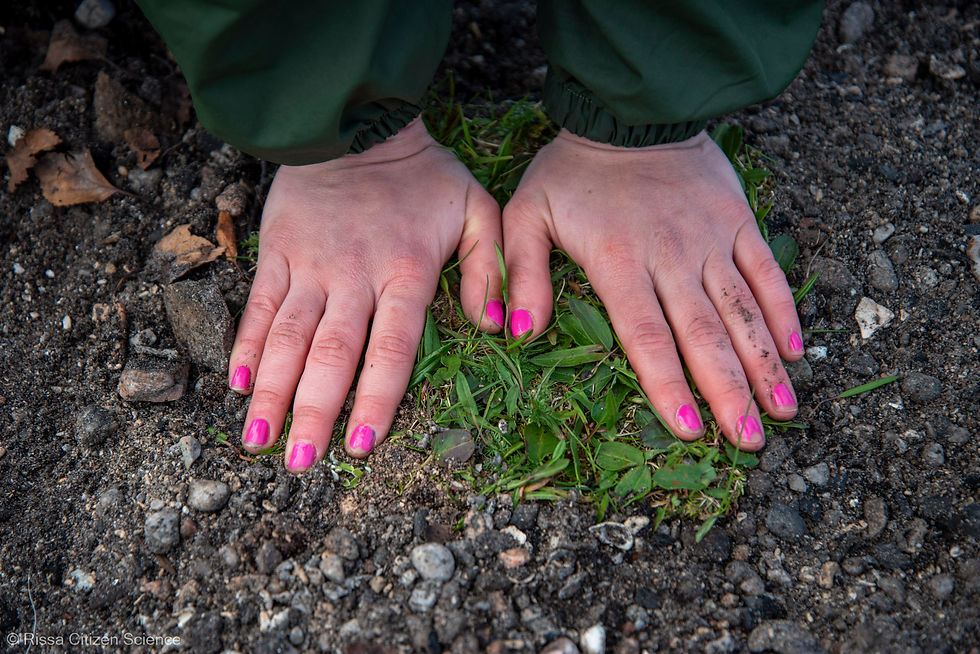
A volunteer restoring vegetation where it had been destroyed by a campfire.
On the 11th and 12th of June, we were 15 to join this 2-day event co-organized by NINA and Rissa Citizen Science. We targeted four of the most popular Northern Lights viewing spots outside Tromsø (Skulsfjord, Grøtfjord, Rekvikvegen and Sømmarøy). The goal of this event was to co-design restoration methods together with volunteers. Why involve people who aren't experts in nature restoration? Because our aim is to make it possible for anyone, regardless of background, to help restore campfires around Tromsø. While experts bring valuable knowledge and experience, the methods must be practical and accessible to non-experts if they are to be widely adopted.
Many thanks to Alba, Anne, Carsten, Delphin, Florentine, Jacqueline, Jessie, Leo, Lilly, Manny, Maren, Marit, Margrethe, Martha and Roel for making these two days as fun as productive!
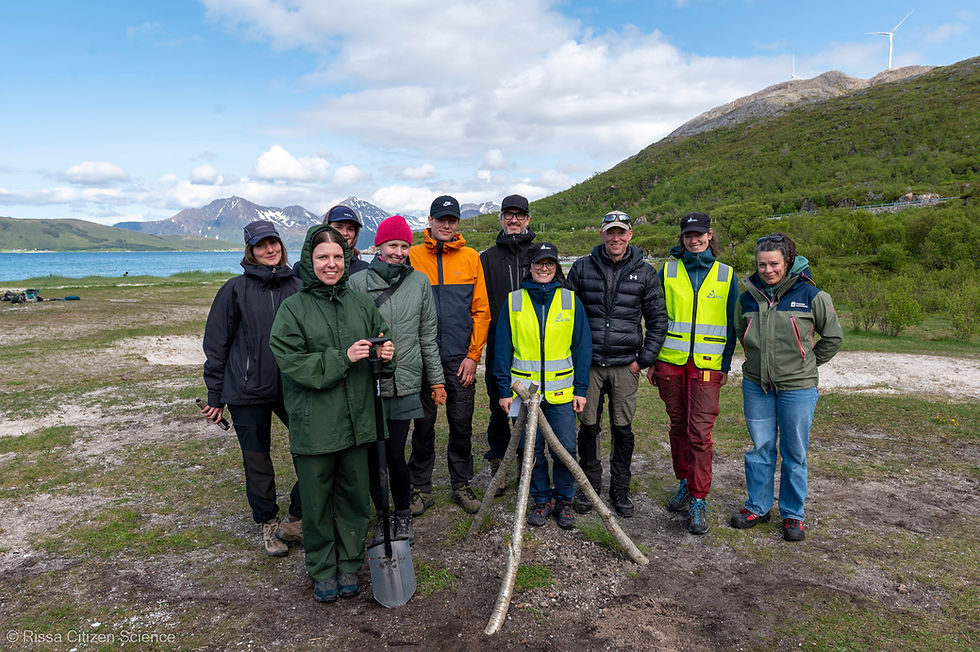
The team on the 12th of June in Sommarøy.
Mapping dumped campfires
Before restoring nature, the volunteers learned to map campfires on the study sites.
A form co-designed by NINA and Rissa CS follows citizen science principles, making it easy for everyone to contribute. The observations entered in the form include the GPS position, the campfire's diameter, presence of a stone ring, presence of commercial or "wild" wood, and damage to nearby trees.
Once you start looking for campfires, you realize they are everywhere at these Northern Lights viewing spots and fire remains often include branches and trunks from nearby trees. In the Arctic (Tromsø is about 350 km north of the Arctic Circle) the growing season is short, trees grow slowly and a burned patch of soil stays bare for a very long time.

Martha is measuring the diameter of a campfire on a beach used by Northern Lights hunters.
Plant survey by NINA botanists
As the volunteers mapped out campfires in the area, NINA botanists Anne and Marit carried out a detailed vegetation survey near one of the sites we planned to restore later that day. Identifying species of grass, sedge and other plants that are just a few centimeters tall requires advanced knowledge. But this step is essential to accurately track how the surrounding vegetation responds to restoration efforts over time.
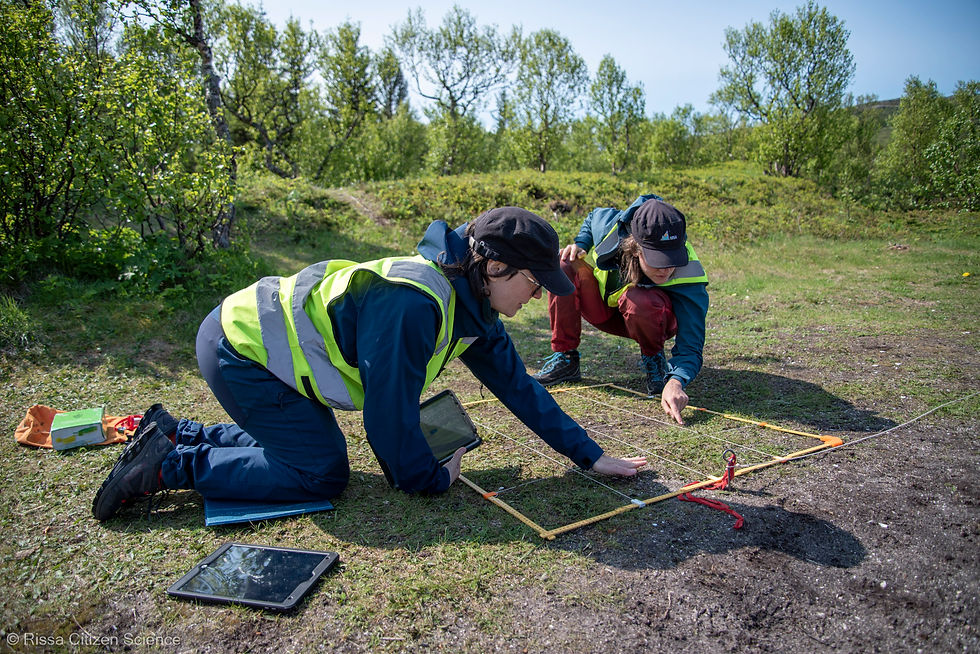
NINA botanists Anne and Marit doing a vegetation survey near a campfire.
Lunch time!
After a few focused hours of campfire mapping, we took a well-earned break under the Arctic sun. We could almost feel its warmth through our layers. Someone had even brought sunscreen. Luckily, sunglasses protected our eyes against the UV radiations, which are somehow stronger than during the winter months.
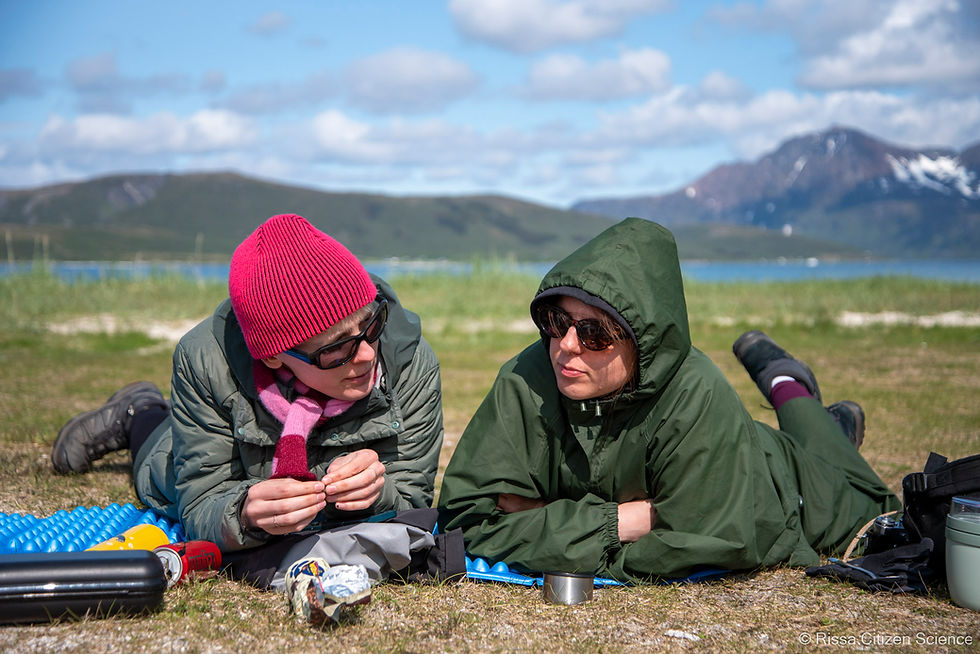
Flo and Jackie sunbathing during their lunch break.
Undoing the damage
Before long, we were back in action. To help nature reclaim this burned patch of land, the method we used is straightforward:
1 – First, we clear the firepit by spreading the stones. Then we collect unburned wood, large charcoal pieces, and litter in a bag for proper disposal later.
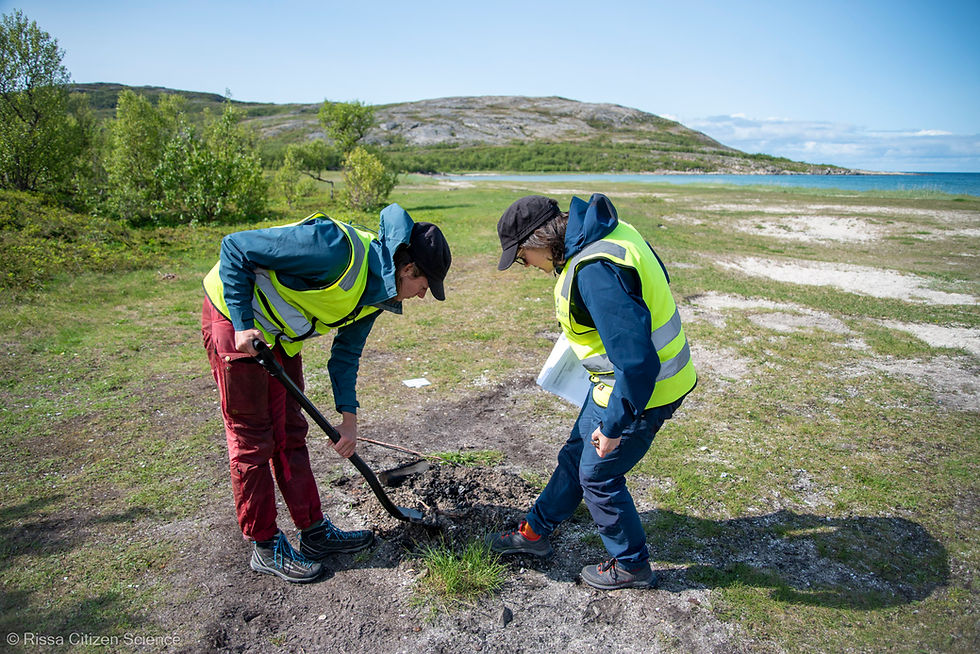
2- We decompact the soil to make it easier for the roots to establish. That's what Jackie is doing here:
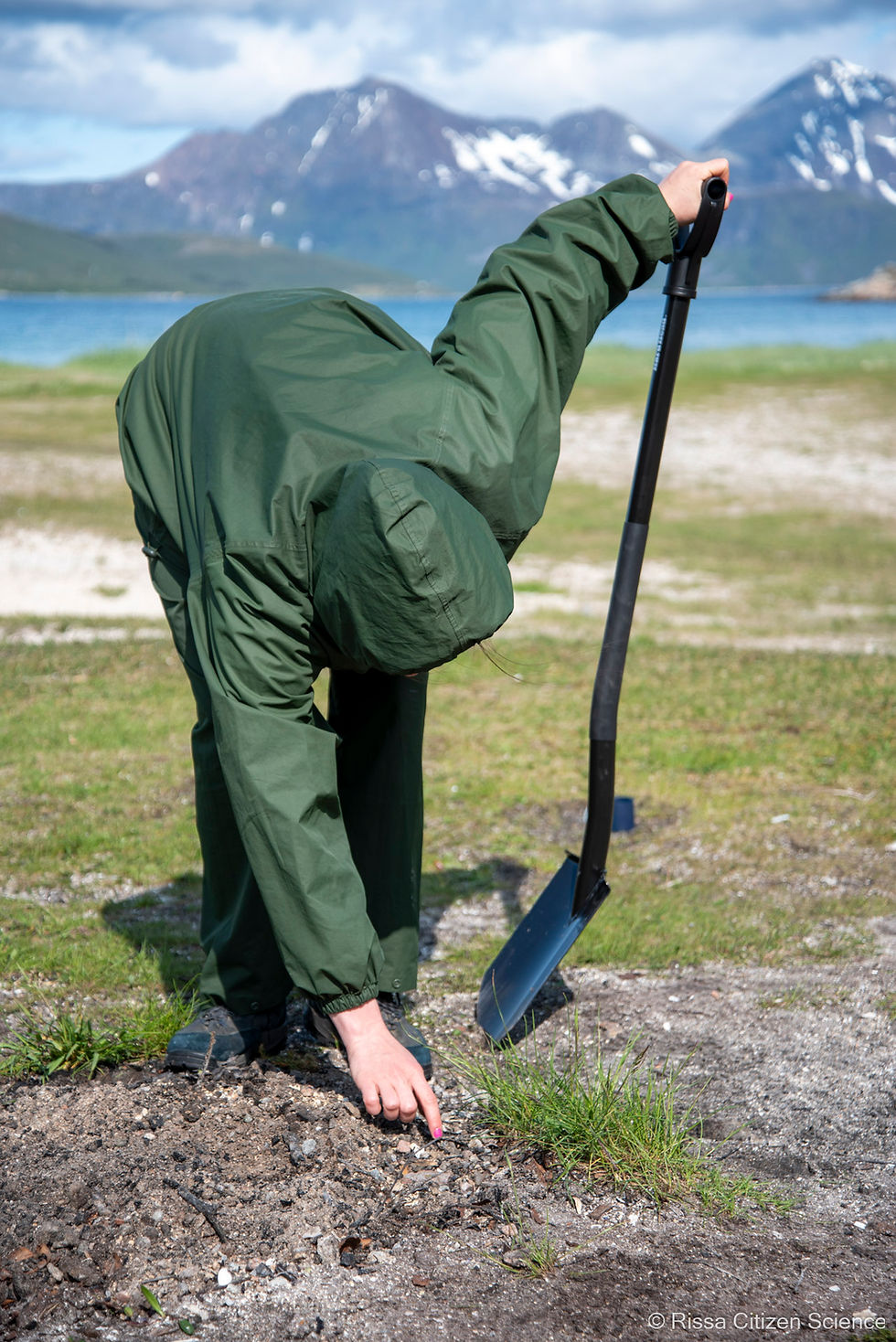
3- We transplant turf patches approximately 20x20 cm in size, choosing ones that closely matche the surrounding vegetation near the campfire. We use the soil removed from the firepit to fill the gap left by the extracted turf. Just like Carsten here:
4- To give nature some time to heal, we mark the restored site with a tripod made of alder or willow, two fast-growing tree species. We will soon replace the plastic-laminated sign with an aluminum sign made by Lawrence Malstaf, a Tromsø-based artist.
We hope that this simple tripod will help discourage campers and Northern Lights hunters from lighting new campfires directly on the ground. The aluminum sign will have a QR code linking to the Traceless Northern Lights Tourism project, offering more information. Restoration is being carried out with the landowners’ permission, and local resident associations (Tromvik and Sommarøy utmarkslag, Grøtfjord bygdelag and utviklingslag) are actively involved through the project’s reference group.
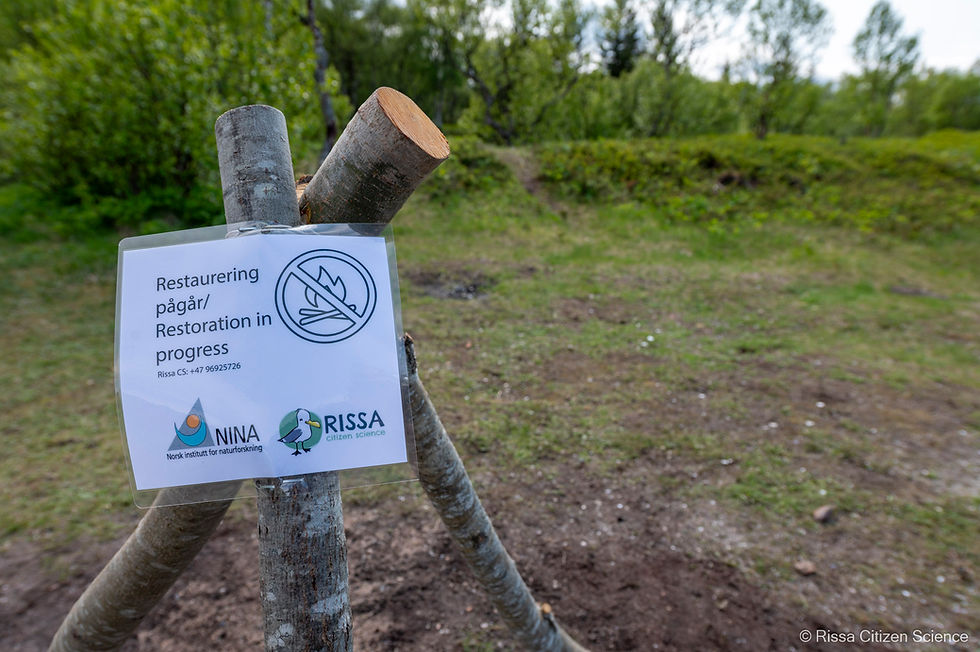
Temporary sign on the tripod where the restoration took place.
Potential solutions
Campfires are a cherished part of Norwegian outdoor traditions—known as friluftsliv—and they’ve also become a staple in most Northern Lights tour experiences. While an outright ban on campfires isn’t currently being considered, there are practical ways to enjoy a fire without harming the environment.
To that end, NINA, Rissa Citizen Science, and the USA-based nonprofit Leave No Trace are collaborating to develop guidelines specifically for the tourism industry. All tour operators in Tromsø offering Northern Lights excursions have already been invited to take part in the project and will soon be invited to review these recommendations. Traceless practices are simple for guides to adopt and typically come at no additional cost to the companies.
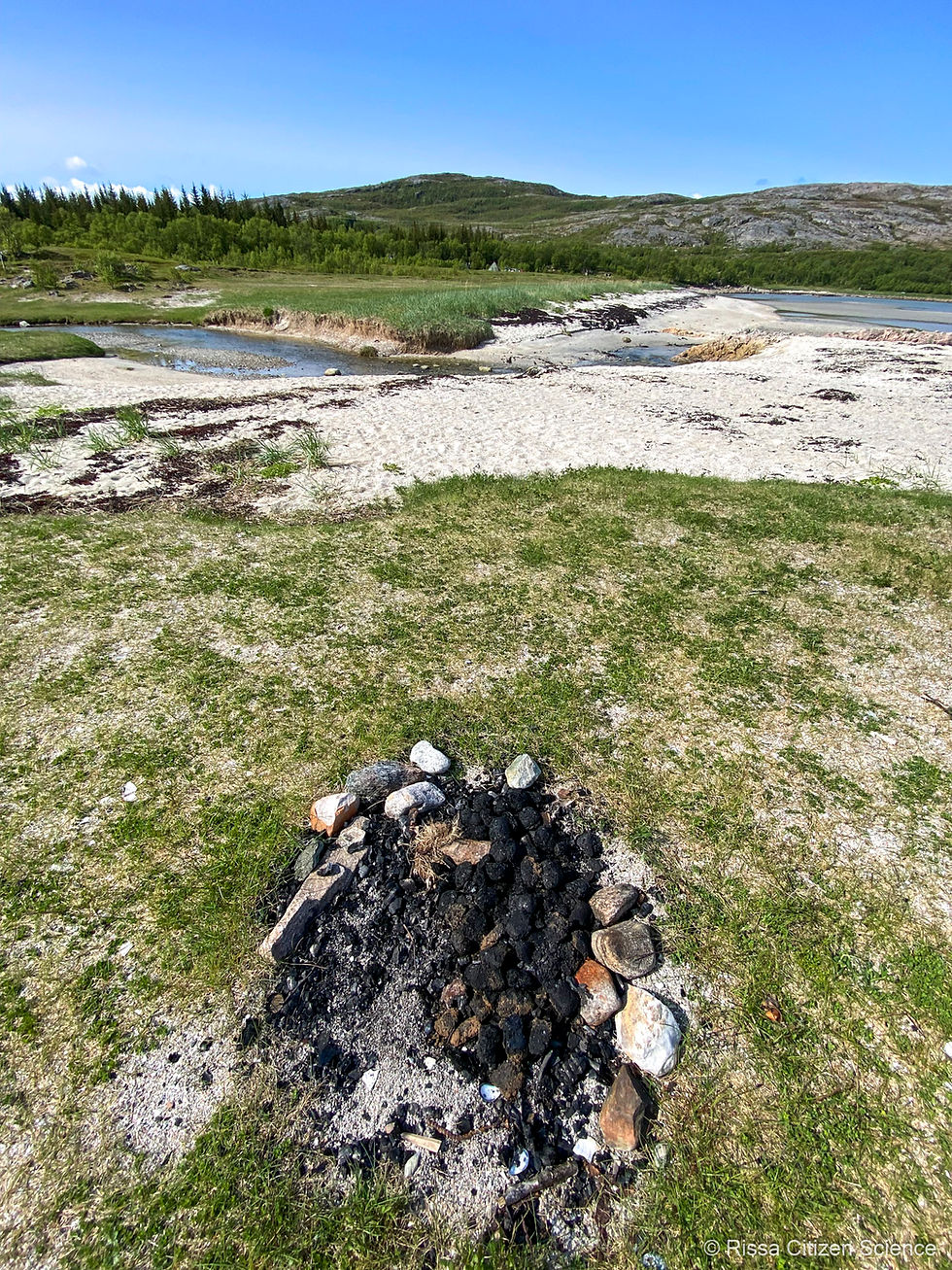
A dumped campfire at a popular Northern Lights viewing spot near Tromsø.
Regenerative traveling
One of the goals of the Traceless Northern Lights Tourism project is to explore how nature restoration can become part of meaningful travel experiences in Tromsø. This aligns with the principles of regenerative tourism, leaving a positive impact on both the environment and the local community.
More and more travelers are seeking deeper, more active ways to connect with the places they visit. If sightseeing alone doesn’t quite cut it (for you or your guests) get in touch and take part in this hands-on experiment!
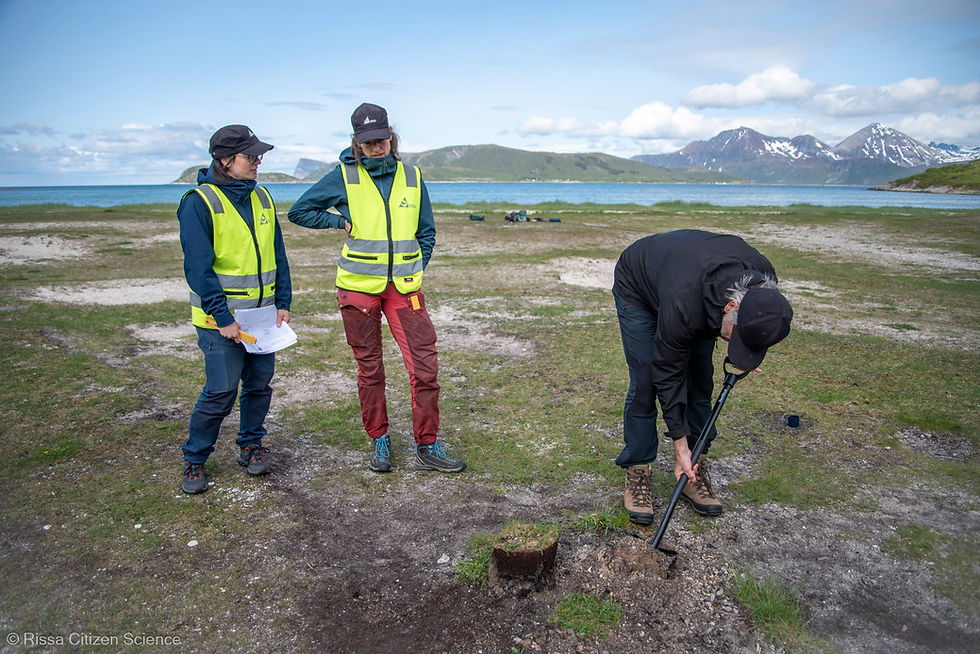
A decent example of teamworking!



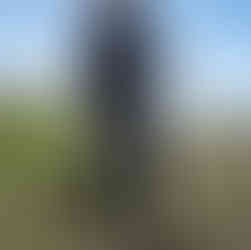


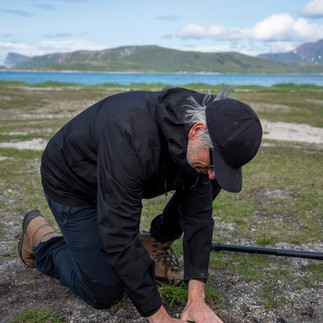

Comments